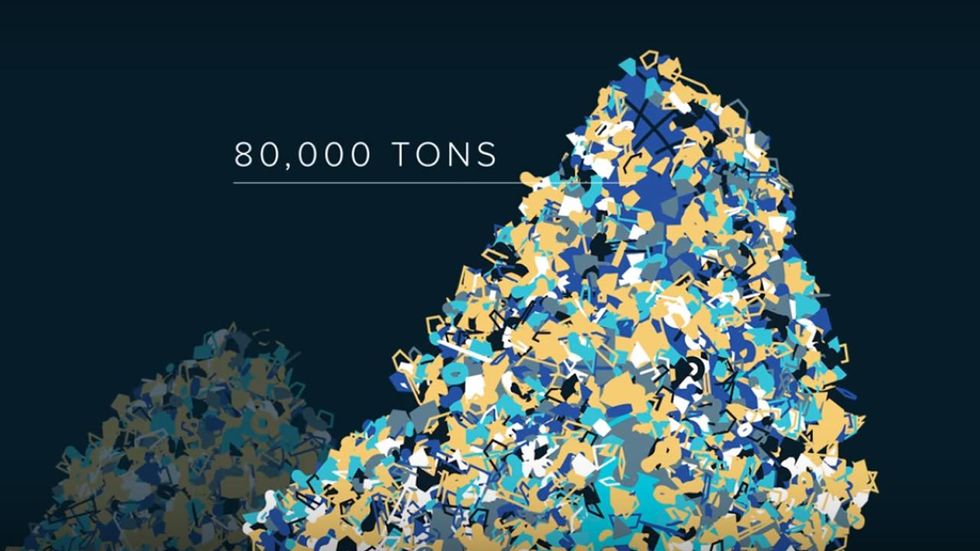
The Great Pacific Garbage Patch, twice the size of Texas, is a collection of plastic, floating trash seated between Hawaii and California. It covers more than 600,000 square miles and weighs about 88,000 tons. (Image source: YouTube screenshot)

The Great Pacific Garbage Patch is a 600,000 square-mile area of ocean between Hawaii and California that is filled with pieces of floating plastic.
The floating mass of trash is now nearly twice the size of Texas and continues to grow, according to a study published Thursday.
Ocean currents and winds are credited with funneling the trash into its location, said Laurent Lebreton of the Ocean Cleanup Foundation, a nonprofit organization that conducted the research.
Lebreton, the lead author of the study, told USA Today that the massive collection of trash was first discovered in the 1990s. Most of the debris comes from nations in Asia and North America and South America, she said.
The patch includes “about 1.8 trillion pieces and weighs 88,000 tons — the equivalent of 500 jumbo jets,” the report states. Its size is as much as 16 times higher than previous estimates.
Research on the garbage patch represents the most comprehensive study taken to date, according to the report. The research was published Thursday in a peer-reviewed journal, Scientific Reports.
The study involved a three-year mapping effort by “an international team of scientists affiliated with the Ocean Cleanup Foundation, six universities and an aerial sensor company,” USA Today reported.
The trash is located in international waters and no governments have volunteered to clean up the mess. That task falls to privately funded groups such as the Ocean Cleanup Foundation.
The foundation referred to the trash pile as a “ticking time bomb.”
“It's a ticking time bomb of larger material," said Joost Dubois, a spokesman with the foundation. “We've got to get it before it breaks down into a size that's too small to collect and also dangerous for marine life.”
No one knows how long the plastic could survive in the ocean, but it could be decades or even centuries, USA Today reported.
There are four other floating trash piles in the world’s oceans, but The Great Pacific Garbage Patch is the largest.